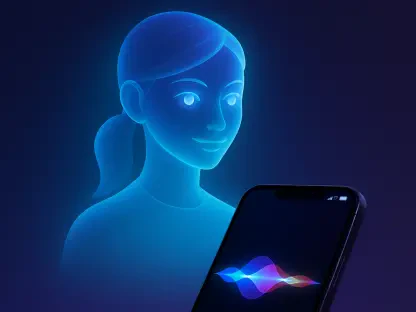Some apps fade into the background of daily life, but a modern messaging client defines how ideas move, how teams coordinate, and how families stay close even when they’re far apart, and that is precisely where Google Messages now sits at the center of Android’s communication experience. The app’s reach stretches across carriers, phones, and the web, binding together a set of features that aim to make the default texting tool feel more like a full-fledged communications hub. What began as a basic SMS box has matured into a platform that carries rich media, encrypted chats, business conversations, and smart cues that gently reduce the friction of everyday messaging.
That shift matters because messaging volume keeps climbing while attention gets scarcer. Every nudge, status dot, and media preview either steals focus or saves time. Google Messages wagers that thoughtful defaults, RCS reliability, and nimble AI will do the latter without turning the app into another busy dashboard. This review traces how the client got here, what it does well, where it stumbles, and how its trajectory shapes personal productivity and cross‑platform etiquette.
At its core, the app wants to minimize overhead: less digging, fewer taps, smarter timing. The experience blends modern chat perks with compatibility fallbacks and a growing toolkit for organization and cleanup. The net result is a product that tries to make mobile messaging feel light again—faster to parse, easier to act on, and more respectful of the boundaries needed to focus.
What Google Messages Is and Why It Matters
Google Messages is the default SMS, MMS, and RCS client across much of Android, preinstalled on Pixels and widely distributed by carriers and OEMs. Beyond the phone, it extends to the web through device pairing, so conversations can continue on a desktop without juggling logins. That ubiquity, coupled with Android’s massive footprint, gives the app an outsized role in shaping standards adoption and user expectations for basic messaging.
RCS, the modern standard that replaces aging SMS/MMS protocols, enables typing indicators, read receipts, high‑quality media, and improved group chat behavior. When RCS is available for both parties, Messages turns on these features and adds end‑to‑end encryption for one‑to‑one and, increasingly, group conversations. When it isn’t, the app falls back to SMS or MMS, preserving reach at the expense of media fidelity and smart features. Carriers and device makers are part of that equation; their network support and software choices influence which capabilities show up and how consistently they work.
This relevance goes beyond convenience. Encryption covers sensitive exchanges that would otherwise move to third‑party apps, and richer media improves legibility in everything from location sharing to contract reviews. Verified business messaging pipes in airline updates, order confirmations, and two‑factor codes, while tools like scheduling, per‑thread settings, and inbox triage bring a productivity mindset to the texting inbox. The highlight is not a single feature, but the coherence of a system that tries to be dependable, expressive, and practical.
Feature Deep Dive and User Experience
Thoughtful design runs through the app, but the real magic is in how those choices reduce friction in day‑to‑day use. The interface leans on clean typography, clear avatars, and message bubbles with just enough contrast to scan quickly. The overall effect is calm; even in busy threads, the visual hierarchy keeps the eye anchored on what matters.
Navigation follows familiar patterns: a primary inbox with pinned threads pinned up top, a prominent compose button, and search that surfaces people, files, and context metadata. This layout isn’t flashy, yet it proves efficient. Most tasks land within a beat or two, which is exactly the point in an app that users open dozens of times a day.
RCS Messaging Foundation
RCS supplies the modern chat basics—typing indicators, read receipts, full‑resolution media, expressive group chat controls, and delivery acknowledgments that feel more like internet messaging than legacy texting. End‑to‑end encryption covers one‑to‑one conversations by default when both sides support it, and group E2EE continues to expand, elevating privacy without adding setup overhead. The result is a conversation flow that feels immediate and human, not transactional.
When RCS availability drops, Messages falls back to SMS/MMS, which can strip quality and useful signals. Videos compress, reactions flatten to text on some devices, and read states disappear. To limit confusion, the interface labels states, so users know whether they’re chatting over a secure RCS channel or sending a plain text. In practice, this softens the friction of a mixed ecosystem without hiding trade‑offs.
Performance remains a standout. On Wi‑Fi, delivery and send latency are snappy, and media uploads rarely stall. On mobile data, the app reliably queues and retries without user babysitting. In spotty coverage, Messages degrades gracefully, nudging content through when connectivity returns. That quiet resilience matters as much as headline features; reliability is the baseline that builds trust.
Notifications and Attention Controls
Attention is the natural bottleneck in messaging, and Messages addresses that with a spectrum of controls. Priority conversations elevate select contacts so their alerts always peek through. On Android 11 or later, these threads show contact photos in the status area and sort above routine alerts. It’s a subtle upgrade, yet it converts the notification shade into a triage tool rather than a flood.
Per‑thread sounds and notification channels offer fine‑grained control down to the conversation. A project group can buzz with a distinct tone, while a family chat hums with something softer. Snoozing adds another layer: threads can be muted for an hour, eight hours, a day, or indefinitely. This temporal mute protects focus during work or downtime without forcing a permanent silence that users later forget to reverse.
When unread counts pile up, a universal “Mark all as read” clears the slate in a single tap. Crucially, this is not about ignoring messages; it’s about regaining control after a spike. Combined with granular per‑thread settings, these tools create a healthier default, where notifications are a precision instrument instead of a blunt object.
Conversation Organization and Focus
An organized inbox is faster to parse, which is why pinning exists. Up to 20 threads can stick to the top for quick access, keeping mission‑critical conversations always within reach. This is especially useful for users who rely on texting to coordinate work, where a handful of threads demand frequent check‑ins.
Starred messages take the idea deeper by saving individual messages for later. Contracts, addresses, gate changes, and key decisions can be flagged and resurfaced from a single place, removing the need to scroll endlessly. Smart search complements that with person‑scoped queries and filters for links, media, and locations, which can be combined to zero in on a specific artifact from months back.
Swipe gestures turn triage into muscle memory. Archive, delete, and read/unread toggles can be assigned to left and right swipes, making quick cleanup feel almost invisible. Over time, this pattern accelerates inbox maintenance, making it less likely that important threads get buried under noise.
Composition, Scheduling, and Smart Tools
Scheduling is one of the app’s most quietly powerful features. Messages can be composed at night and set to deliver during business hours, or drafted in a rush and timed for a more considerate slot across time zones. The experience is straightforward—press and hold the send icon, pick a time, and the app handles the rest. Recipients simply receive the message at the chosen moment, with no hint of scheduling.
Smart replies and suggestions offer fast responses to routine prompts, with short phrases and emoji that align with common patterns. They shine in quick confirmations or logistics, though users who prefer full control can easily disable them. Link and YouTube previews provide immediate context, which reduces app‑switching and speeds decisions. A preview blocks out just enough to inform the choice to tap, while keeping the thread’s pace intact.
Reactions bridge the gap between acknowledgment and reply. A long‑press brings up the reaction picker, and a double‑tap triggers a quick thumbs‑up, which can be the perfect “got it” in a busy exchange. Messages also interprets iPhone tapbacks as emoji instead of noisy text on supported devices, cutting clutter and preserving conversation flow.
Personalization and Accessibility
Per‑conversation color themes bring visual identity to threads, particularly useful for RCS conversations that support the feature. Associating a client with red or a partner with violet creates a quick mental map of priorities without reading a single word. It’s an old design trick, applied thoughtfully to texting.
Pinch‑to‑zoom for conversation text is another quietly impactful touch. Instead of diving into global settings, users can enlarge text on the fly when eyes are strained, then reset as needed. This accessibility feature respects context: the thread adapts while the system stays as is. Avatars and bubble spacing add clarity, making it easier to scan who said what at a glance—even in rapid‑fire group chats.
These visual choices banish the cramped look that often plagues messaging apps. The result is a reading experience where fatigue arrives later and important details stand out more quickly. Accessibility here is not an afterthought; it’s a design cornerstone that helps everyone.
Productivity Integrations
Context switching is a productivity killer, and the app reduces it with pragmatic integrations. Dates and times in messages are detected and underlined; a tap opens a quick view of the calendar at that slot, and a “Create event” shortcut auto‑fills key details. This trims the dance of checking availability and drafting an invite to a few seconds.
Desktop continuity via Messages for web turns the phone into a bridge rather than a barrier. Pairing is fast, messages sync securely, and desktop notifications arrive with enough context to act without picking up the phone. While clipboard sync behavior can depend on OEM or browser, the overall flow keeps conversations moving during deep work without derailing it.
Media handling is similarly streamlined. Photos, videos, and links get inline previews, and the attachment workflow is tidy—camera, gallery, documents, and other file sources are tucked into a compact sheet with clear labels. Sharing feels natural, even when juggling files in the middle of a conversation.
AI and Gemini in Messages
Gemini’s presence in Messages aims to add a light layer of AI where it makes sense. Draft refinement, tone adjustments, and quick brainstorms can nudge a sticky reply toward clarity. Because this is messaging, speed matters more than depth; the assist is designed to be immediate and skippable rather than an expedition into a full chat window.
There’s also a niche but clever utility in constrained connectivity scenarios, such as in‑flight portals that permit limited access. When available, Gemini can offer a semblance of information retrieval or drafting help even when broader internet access is blocked, though caveats apply based on airline policies and device connectivity rules. For some users, that edge case turns a long flight into a chance to catch up on replies without full Wi‑Fi.
Privacy controls remain explicit. Gemini can be disabled entirely for a cleaner interface, and data handling disclosures outline how prompts and context may be processed. Users who prefer zero AI in their messaging flow can opt out without losing any core chat capabilities, while those who opt in gain a just‑in‑time co‑pilot for wording and ideas.
Security, Spam Protection, and Cleanup
Encryption lands where it matters most. One‑to‑one RCS conversations are end‑to‑end encrypted, and group E2EE continues to roll out across regions and carriers, making confidentiality the norm when the standard is active. SMS and MMS remain unencrypted by design, and the app is upfront about this, so users can calibrate sensitivity accordingly.
Spam detection leans on machine learning and verified business sender programs to keep inboxes clean. Suspect messages are flagged with clear affordances to report or allow, and verified senders display brand cues and trust signals. This is especially important in an era of phishing and smishing attacks, where a single bad link can cause outsized harm.
Cleanup tools tackle the everyday mess. One‑time passwords can auto‑delete after 24 hours to prevent inbox bloat while still giving users a practical window to use them. Backup and restore are supported through platform services, but there are trade‑offs: encrypted RCS data and cloud backups follow different rules, and users should understand what is stored where. The app handles the heavy lifting, but informed choices keep privacy and continuity in balance.
Latest Developments and Market Trends
RCS momentum has accelerated across carriers and OEMs, with wider adherence to the Universal Profile that underpins features and interoperability. The standard is no longer a niche; it’s the default path forward for carrier‑based messaging. That said, completeness still varies by region, which is why Messages continues to present state labels and fallbacks transparently.
Apple’s intent to support RCS reshapes cross‑platform norms. As support rolls out, reaction parity, higher‑quality media, and read states reduce the awkwardness of mixed‑ecosystem threads. The ripple effect is cultural as much as technical: fewer fractured experiences, fewer duplicate apps for basic communication, and a narrowing gap between native texting and over‑the‑top messengers.
Meanwhile, Google has pushed steady updates: group E2EE improvements, richer business messaging with carousels and payments, and more granular notification channels. Anti‑spam models keep learning, while UI refinements shave small but meaningful seconds off common tasks. On‑device AI has begun to summarize long threads and suggest actions—flagging dates, extracting addresses, or proposing follow‑ups—bringing triage closer to autopilot without bulldozing user agency.
Real-World Applications and Usage Scenarios
For personal productivity, the story is one of focus and recall. Pinned threads keep critical contacts at hand; stars preserve essential fragments—addresses, flight codes, meeting decisions—so they resurface instantly. Scheduled sends allow late‑night planning without late‑night pings, and OTP auto‑cleanup prevents confirmation codes from clogging up mental bandwidth. In practice, these small touches add up to a calmer inbox.
In professional settings, customization and previews shine. Per‑contact sounds help triage from a pocket, while priority conversations ensure a manager or client isn’t swallowed by group chatter. Link previews enable quick scanning of documents or news without breaking concentration, and calendar creation from within the chat compresses a multi‑step workflow into a glide. On desktop, continuity lets users respond during deep work with minimal disruption.
Travel and events bring different demands. Noisy group chats can be snoozed to preserve sanity while still allowing on‑demand check‑ins. Location and link sharing streamline meetups, and in constrained networks—airports, planes, crowded venues—RCS reliability and queued sends keep messages flowing when connectivity hiccups. Accessibility features, from zoomable text to color coding, reduce cognitive load, which is especially helpful when plans shift quickly.
Challenges, Constraints, and What Holds It Back
Interoperability with iMessage has long been an irritant, particularly around reactions, media quality, and read states when conversations drop to SMS/MMS. With RCS support expanding on both sides, many pain points are softening, but they haven’t vanished everywhere at once. Users still encounter uneven behavior in mixed groups, and the app has to keep signaling channel states clearly.
Android’s diversity is a strength and a complication. OEM skins—especially heavy customizations—sometimes reshuffle or delay features. Carrier dependencies can gate RCS functionality or create inconsistent rollouts. As a result, two users on different Android devices may not see the exact same settings or behaviors, which can frustrate those who value predictability.
Regional disparities and OS requirements add further fragmentation. Priority conversations, for example, are native to Android 11 and later; some users on older phones simply won’t see those options. Privacy trade‑offs also deserve attention: cloud backups, smart suggestions, and AI assistance bring convenience but may introduce data considerations that security‑sensitive users or regulated businesses can’t accept. In those cases, enterprise controls, retention policies, or an alternative client may be necessary.
Outlook and Future Trajectory
Broader RCS adoption points toward a future where reactions, media, and encryption feel uniform across ecosystems. As Apple’s support beds in and carriers harmonize implementations, everyday texting should behave more like modern chat, with fewer sharp edges and far fewer caveats. That shift benefits everyone by making the default experience good enough for most needs.
Feature innovation is likely to focus on depth rather than breadth. Richer business messaging could pull more transactional threads—receipts, support, boarding passes—into structured, trustworthy experiences. Editing and unsend options would bring parity with popular internet messengers. Smarter notifications may adapt to context, bubbling up the right messages during work and suppressing non‑urgent pings during focus or rest.
Multi‑device consistency is another clear frontier. Tighter Calendar and Meet integration can streamline scheduling and ad‑hoc calls directly from chat, while improved device pairing and session persistence would remove friction for users who split time across laptops and tablets. Spam filtering will keep evolving with on‑device ML that blocks threats without hoarding sensitive data, preserving privacy while improving safety.
Verdict and Key Takeaways
Google Messages stood out as a mature, practical communications hub grounded in a robust RCS core. The app delivered fast, reliable conversations; clean organization through pins, stars, and search; and meaningful quality‑of‑life boosts like scheduling, previews, and per‑thread controls. Personalization and accessibility made long days of texting easier on the eyes and the brain, while desktop continuity kept the flow intact across devices.
The drawbacks were real but narrowing. Cross‑platform gaps with iMessage lingered in certain edge cases, OEM and carrier fragmentation complicated uniform rollouts, and AI surfaced as occasional UI clutter for users who preferred minimalism. Privacy‑conscious individuals and regulated teams had to weigh cloud backup behaviors and suggestion features against policy needs, sometimes opting to pare down or disable extras.
The recommended path forward was straightforward. Most Android users gained by setting RCS as the default, tuning notification channels per thread, and leaning on scheduled sends, starred messages, and OTP auto‑deletion to keep the inbox light. Professionals benefited from priority conversations, desktop pairing, and calendar integration to compress routine workflows. As RCS interoperability deepened, the everyday value of the app grew, making the default messenger a strong, privacy‑aware choice that required fewer compromises and less effort to use well.









